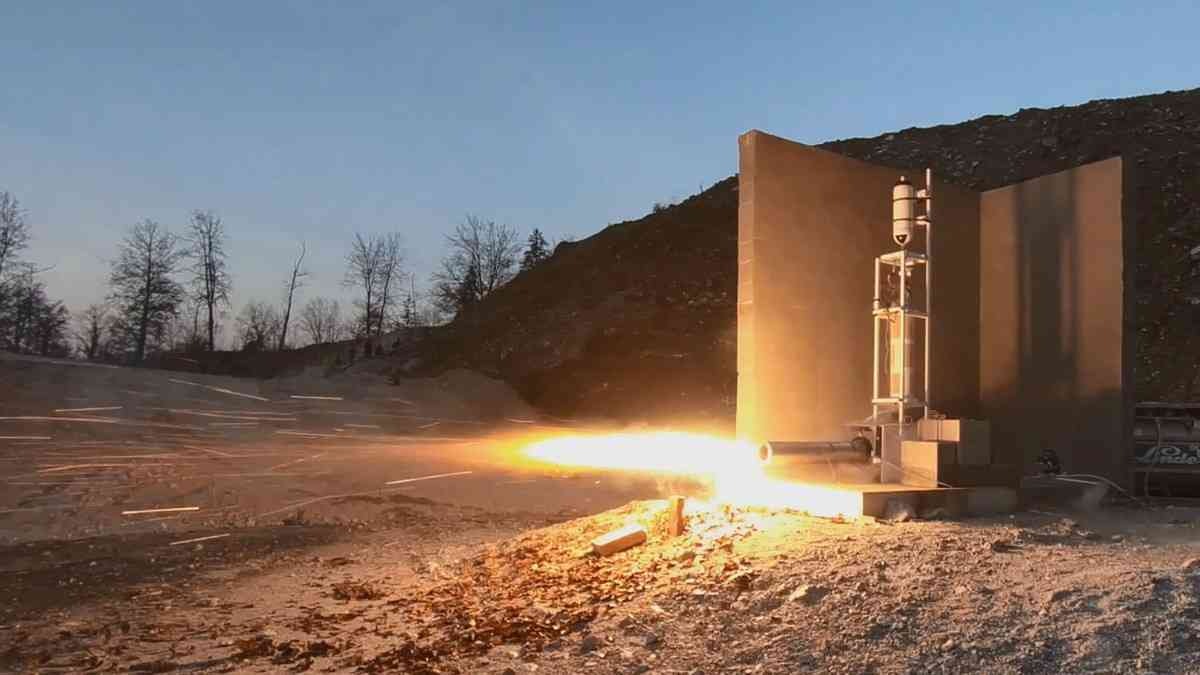Table of contents
Browse categories
Browse authors
 AB
ABAlberto Boffi
 AL
ALAlessia Longo
 AH
AHAl Hoge
 AB
ABAljaž Blažun
 BJ
BJBernard Jerman
 BČ
BČBojan Čontala
 CF
CFCarsten Frederiksen
 CS
CSCarsten Stjernfelt
 DC
DCDaniel Colmenares
 DF
DFDino Florjančič
 EB
EBEmanuele Burgognoni
 EK
EKEva Kalšek
 FB
FBFranck Beranger
 GR
GRGabriele Ribichini
Glacier Chen
 GS
GSGrant Maloy Smith
 HB
HBHelmut Behmüller
 IB
IBIza Burnik
 JO
JOJaka Ogorevc
 JR
JRJake Rosenthal
 JS
JSJernej Sirk
 JM
JMJohn Miller
 KM
KMKarla Yera Morales
 KD
KDKayla Day
 KS
KSKonrad Schweiger
Leslie Wang
 LS
LSLoïc Siret
 LJ
LJLuka Jerman
 MB
MBMarco Behmer
 MR
MRMarco Ribichini
 ML
MLMatic Lebar
 MS
MSMatjaž Strniša
 ME
MEMatthew Engquist
 ME
MEMichael Elmerick
 NP
NPNicolas Phan
 OM
OMOwen Maginity
 PF
PFPatrick Fu
 PR
PRPrimož Rome
 RM
RMRok Mesar
 RS
RSRupert Schwarz
 SA
SASamuele Ardizio
 SK
SKSimon Kodrič
 SG
SGSøren Linnet Gjelstrup
 TH
THThorsten Hartleb
 TV
TVTirin Varghese
 UK
UKUrban Kuhar
Valentino Pagliara
 VS
VSVid Selič
 WK
WKWill Kooiker
Measuring the Performance of a Hybrid Rocket Engine

The Spacelink Institute is a team of young engineers who aspire to develop a space program in Slovenia. Our team is building a rocket that will be launched above an altitude of 100 km - the boundary between Earth’s atmosphere and outer space. To test and validate the hybrid engine motor we performed a series of measurements during operation using DewesoftX and Dewesoft data acquisition instruments.

More than 50 years have passed since humans put the first satellite into orbit and first crew on the surface of the Moon. But only in the last decade has access to space become so affordable, that we are capable of launching commercial payloads.
Nevertheless, this is still achieved with large launchers with inflexible schedules and long turnaround times, which limits the true potential of space use and exploration.
Hybrid propulsion engine design
As an alternative, there has recently been a lot of development in the field of hybrid rocket propulsion, which drastically reduces the complexity of flight vehicles and can be used to produce small-in-size, simple and inexpensive small-satellite launchers.
Hybrid propulsion usually involves a liquid or gaseous oxidizer and solid fuel. The main benefits of hybrid propulsion are lower maintenance and development costs and ease of storage and transport. A common fuel in hybrid rocket engines is polymers - such as rubber, often in combination with liquid oxygen as an oxidizer. Due to its strong oxidizing capabilities, organic materials can burn rapidly in its presence, while materials such as oil or charcoal can even become explosive.
In this project, we used Dewesoft hardware and software for data acquisition during the development, calibration and testing of the SL-2 hybrid rocket motor, a flight-ready motor, prepared for use in the Stella 1 rocket. Powered by paraffin fuel and liquid oxygen, SL-2 produces 4 kN of thrust and is designed to lift an 80 kg rocket to an altitude of 10 km, serving as a proof of concept for further development of this technology.
Thorough measurements and analysis of all operating parameters allowed us to get the most information possible out of each engine static test, and thus reduced the total number of tests needed.
The Stella 1 rocket
Stella 1 will be Spacelink’s first rocket, which will be propelled by the SL-2 engine and will reach an altitude of 10 km. It will be equipped with a two-stage recovery system, consisting of a drogue and a main parachute.
In contrast to military rockets and larger rockets that carry astronauts, Stella 1 is passively stabilized, meaning that vertical flight is assured with fixed fins. These become effective only at a certain velocity, which means the rocket needs to be guided in the first meters of flight. To this purpose, we designed and fabricated a launchpad consisting of a three-legged base and a tower.
Rocket technology is a complex topic, involving high temperatures and pressures, vibration, acceleration, and fluid dynamics. Precise measurement of performance is essential for the optimization and troubleshooting of such systems.
Spacelink company
Spacelink is a team of young, innovative engineers who aspire to develop a space program in Slovenia. Our team is building a rocket that will be launched above the Karman line, which lies at an altitude of 100 km and represents the boundary between Earth’s atmosphere and outer space.
There has been a lot of development effort in miniaturizing satellite technology, resulting in the increasing production of micro- and nanosatellites. These range from under 1kg to a few hundred kilograms in mass. Currently, transport to orbit allows very little flexibility with the final orbit, launch frequency, and schedule. At Spacelink we believe we can differentiate by developing small-in-size and high-performance rockets based on hybrid rocket propulsion to change the way payload is launched into orbit.
The hybrid rocket propulsion system - SL-2
Launcher development usually starts with developing and testing the propulsion system on the ground. In our case, we started with the SL-2 rocket engine, which is a scaled-down version of what will be later used in the full-scale rocket with a hybrid rocket propulsion system. Nevertheless, it is still equipped with all sorts of sensors and is designed to provide as much information as possible.
The motor consists of three main parts:
a combustion chamber horizontal in the bottom,
a liquid oxygen tank in the middle,
and a pressurized tank at the top.
Between the tanks, there is a valve with a closed-loop regulation system that takes high-pressure air from the top tank and feeds it into the oxidizer tank with a lower and constant pressure of 40 bar.
When the main solenoid valve below the oxidizer tank is opened, liquid oxygen is fed through the injection nozzle, which disperses it into fine droplets. In the combustion chamber, droplets mix and react with molten paraffin. This produces superheated gas products – more than 3000 °C, which is accelerated to supersonic speeds when passing through the main nozzle. Fast-moving gases produce thrust and deafening noise.
We needed a way to measure the main performance parameters of the SL-2 in a remote test location, with the ability to observe them in real-time in case the test needed to be aborted or some changes needed to be done manually.
For some measured quantities, we only needed to know the maximum/minimum value, for example, the temperature of the chamber wall, while others changed with a high frequency, such as the pressure of the combustion chamber. It was also important that data from different sensors were time-synced - that way we could spot what caused abnormalities in engine behavior such as changes of oxidizer level readings due to increased pressure in the tank.
The entire testing sequence was controlled by our flight computer and its onboard software. It consisted of filling the tank with liquid oxygen and cooling the piping, pressurizing the system, 5 seconds of burn time, venting, emptying the remaining oxidizer and finally warm-up. During the testing, we focused mainly on the analysis of those 5 seconds when the motor was operating.
The performance measurement system setup
Our measuring setup consisted of two Dewesoft DAQ systems, one SIRIUS and one KRYPTON, daisy-chained together to achieve a sufficient number of channels. The devices were connected to a laptop through a 100 m ethernet cable. Our testing required the acquisition of a range of physical parameters and thus the use of more types of sensors.
Pressure transducers
There are several methods of measuring pressure, such as capacitive, optical, piezoelectric, etc. In this case, an industrial piezoresistive transducer was used. An integrated microprocessor-based amplifier picks up resistance changes of the ceramic sensor and converts them to standard 4-20 mA current output. The transducer is connected to the SIRIUS DAQ system via an external 50-ohm DSI current shunt.
Thermocouples
Thermocouples are simple temperature sensors that consist of two different electrical conductors forming an electrical junction. They produce a temperature-dependent voltage that is picked up by the DAQ device and converted to temperature. They are widely used in various industries due to their low cost, interchangeability, wide measuring range and low thermal mass.
Strain gauges
Strain gauges are devices used to measure the strain of an object. They are usually attached to the surface with an adhesive and deform together with the surface, which changes the gauge’s resistance. With proper calibration, they can be effectively used to measure force and are therefore commonly used in load cells, force sensors and scales.
Capacitive level sensor
For measuring the level of liquid oxygen in the tank during filling and motor operation we developed a capacitive level sensor that can operate in a cryogenic, oxidizing environment. It consists of two concentric stainless-steel tubes, submerged in the liquid oxygen. Rising or falling of the liquid level is registered by the processor as a change of electrical capacity and converted into a PWM signal. This signal was then analyzed with Dewesoft Supercounter technology to determine the duty cycle and convert it to the level of the liquid.
The engine performance measurement analysis
The measurement data provided the basis for a thorough analysis of the key performance factors that contribute to the behavior of the rocket motor.
Thrust analysis
To measure thrust and thrust misalignment the combustion chamber was mounted on a measuring plate. One strain gauge was attached to each side of the four metal beams, giving four half-bridge configurations.
All four channels were connected to Dewesoft Sirius’ internal bridge amplifier and added together to give the total thrust.
This configuration also allowed us to measure side forces, which can be used to determine the misalignment of the nozzle or to characterize the thrust vector control system if one is used.
The two most important parameters we were able to get from the collected data were:
The time until nominal thrust: this is important for achieving a high initial acceleration of the rocket.
The total impulse - this parameter is related to the final achieved altitude of the rocket.
Combustion chamber pressure analysis
One pressure transducer was connected directly to the combustion chamber to monitor the pressure inside. The purpose of that is to observe combustion instabilities (oscillations), fuel efficiency and potential issues such as nozzle blocking. In this case, we noticed two distinct combustion instabilities, one low frequency, and one high frequency, which appeared because of the acoustic properties of the combustion chamber.
Pressure regulation analysis
The liquid oxygen tank was pressurized with an external high-pressure tank. To achieve the constant pressure of the oxidizer, we developed an active regulation system. It uses a motorized valve, a pressure transducer, and a PID controller. The pressure sensor was connected in parallel to the Sirius for the acquisition of data for post-analysis.
Combustion chamber thermal management
To determine the effectiveness of chamber thermal insulation, four K-type thermocouples were attached along the length of the combustion chamber external surface and connected to Dewesoft Krypton. Temperatures were monitored during motor operation and several minutes after to determine delayed heat transfer. We concluded that the existing internal insulation worked perfectly, as the wall temperatures never rose above 40°C.
Test conclusion
There are many factors that contribute to the behavior of rocket motors. They have to be measured and optimized from one test to another to achieve stable, reliable, and efficient operation for further use of in-flight vehicles. Furthermore, we believe that, if there is one thing that you should trust in any industrial R&D, it is the measuring equipment. Since our measurements took place on-site, it was important that the hardware was robust and suitable not only for laboratory use.
In our case, Dewesoft hardware and software has not only proven to be reliable but also incredibly versatile - with minor modifications we could use just about any sensor available. Once our team members became a bit familiar with Dewesoft software, they found it to be very rich in features and functions, while still staying clear and straightforward.